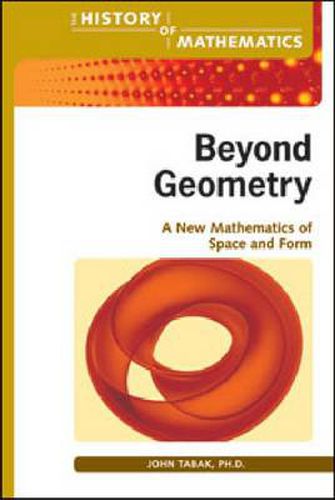Readings Newsletter
Become a Readings Member to make your shopping experience even easier.
Sign in or sign up for free!
You’re not far away from qualifying for FREE standard shipping within Australia
You’ve qualified for FREE standard shipping within Australia
The cart is loading…






For millennia, Euclidean geometry, the geometry of the ancient Greeks, set the standard for rigor in mathematics–it was the only branch of mathematics that had been developed axiomatically, or based on a system of axioms. This form of geometry was the language of mathematics. But early in the 19th century, mathematicians developed geometries very different from Euclid’s simply by choosing axioms different from those used by Euclid. These new geometries were internally consistent in the sense that mathematicians could find no theorems arising within these geometries that could be proven both true and false. Beyond Geometry describes how set-theoretic topology developed and why it now occupies a central place in mathematics. Describing axiomatic method as well as providing a definition of what a geometric property is, this new resource examines how early analysts incorporated geometric thinking into their development of the calculus. It also looks at the various mathematicians who struggled to develop a new conceptual framework for mathematics and examines one of the sub-disciplines of set-theoretic topology called dimension theory.<\p>
$9.00 standard shipping within Australia
FREE standard shipping within Australia for orders over $100.00
Express & International shipping calculated at checkout
For millennia, Euclidean geometry, the geometry of the ancient Greeks, set the standard for rigor in mathematics–it was the only branch of mathematics that had been developed axiomatically, or based on a system of axioms. This form of geometry was the language of mathematics. But early in the 19th century, mathematicians developed geometries very different from Euclid’s simply by choosing axioms different from those used by Euclid. These new geometries were internally consistent in the sense that mathematicians could find no theorems arising within these geometries that could be proven both true and false. Beyond Geometry describes how set-theoretic topology developed and why it now occupies a central place in mathematics. Describing axiomatic method as well as providing a definition of what a geometric property is, this new resource examines how early analysts incorporated geometric thinking into their development of the calculus. It also looks at the various mathematicians who struggled to develop a new conceptual framework for mathematics and examines one of the sub-disciplines of set-theoretic topology called dimension theory.<\p>